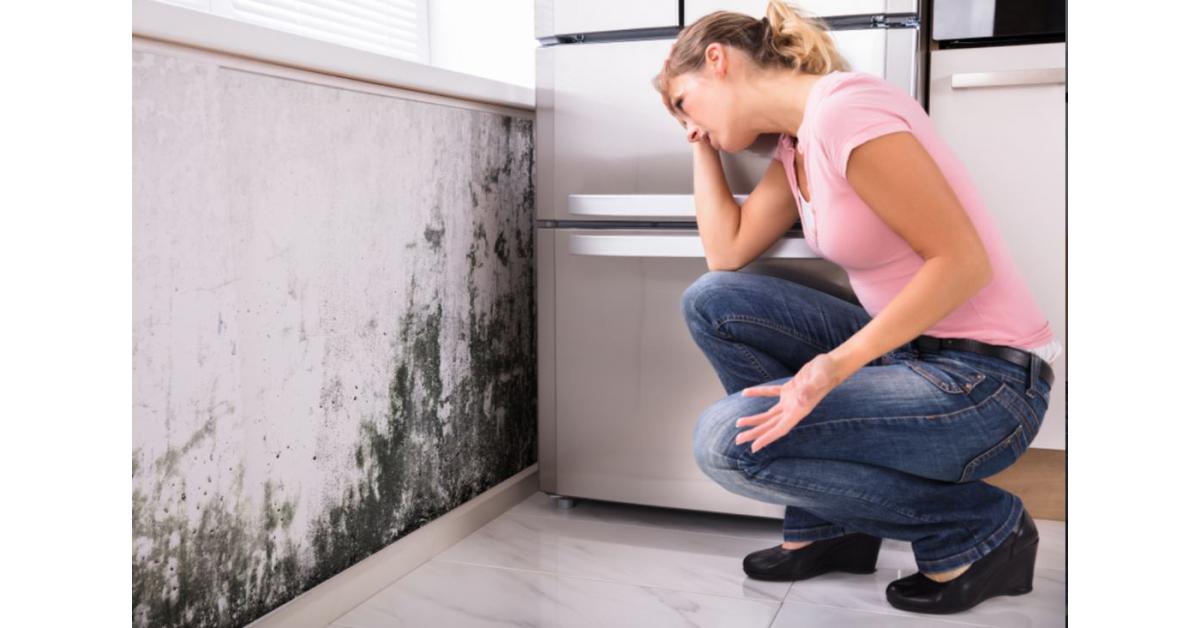The extra rain on the east coast of Australia recently has kept humidity levels high, encouraging mould to grow in homes which is not good for people’s health.
— Sandy Sanderson. CEO of Elektra Magnesium
BRISBANE, QUEENSLAND, AUSTRALIA, May 16, 2022 /EINPresswire.com/ — There’s been a great deal of extra rainfall over the east coast of Australia this year due to a particularly strong La Nina event and although many reports forecast it will ease soon, a report from Weatherzone says there’s a 50-55% chance La Nina will continue into our winter.
The issue with this extra rain is that humidity levels become high and mould will often grow if the humidity level is higher than 60%. In the home, mould will grow on plaster walls, carpet, lounge, curtains and clothing – and this can adversely affect people’s health after exposure to it.
The rain also brings rising damp from ground waters which can cause mould to grow inside walls. Elektra Magnesium’s CEO, Sandy Sanderson, works with people trying to detox from mould and she says : “The cavity between your home’s roof and ceiling can also breed mould if there’s a slow roof leak. You could be breathing mould spores in without noticing it. One of the most common signs of mould is a musty smell.”
When asked why mould is so bad for people’s health, Ms Sanderson says it’s because exposure to mould can lead to a decrease in the body’s ability to fight off infection by causing a disruption in white blood cell count with inadequate cytokine production.
“This can lead to a weakened immune system overall, especially if there’s chronic exposure,” she says. “Some people – especially the immunosuppressed and those with weaker immune systems – are more sensitive to mould than others.”
Ms Sanderson explains exposure to mould has been shown to cause symptoms like: asthma, itchy eyes, nose and throat, headaches, anxiety, brain fog and lack of concentration, sleep disorders, chronic fatigue or fibromyalgia, inflammation and excess mucus, sneezing, respiratory illness, fungal infections in toenails and other body parts, persistent skin disorders and rashes, and in the long run – cancer.
To avoid the health risks associated with mould, it’s important to know how to clean up and detox from mould exposure. According to Ms Sanderson, there’s a lot you can do to avoid or minimise mould growth. Firstly, it’s a good idea to get a humidity meter to check the levels in your home and if its getting close to 60% or higher, then Ms Sanderson recommends getting a dehumidifier to help keep the humidity down. She also recommends getting an air purifier as this will clean up the mould spores.
“If you think you’ve got mould in your home, wear a mask and gloves and clean it up using non-toxic natural cleaners,” says Ms Sanderson. “White vinegar is a popular choice as a cleaner, as studies have shown it kills over 80% of mould spores.”
“You can mix in some essential oils which have anti-fungal properties such as tea tree oil, neem oil, clove oil or citric seed oil, diluted in water,” she adds. “Baking soda or borax diluted in water also work a treat. You can find recipes like these online. Also, make sure you clean your air conditioner regularly.”
As for flushing the mould spores and their mycotoxins out of the body, Ms Sanderson says this can take some time: “The more stress you experience, the lower your magnesium reserves will go. As exposure to mould is a great stress to the body, a lot more magnesium than normal will be required to detox, defend and re-balance,” she explains.
“You can flush out some of these mycotoxins by taking activated charcoal or Bentonite clay. Studies have shown both of these products are able to attract and bind with the mould toxins, thereby helping the body to flush them out. The clay also donates beneficial trace minerals along the way,” she adds.
“Certain essential oils like oregano, tea tree, melaleuca and clove, or spices like cinnamon, inhibit fungal growth. Raw garlic, apple cider vinegar and lemon juice do the same. Teas like pau d’arco, ginger, olive leaf, Tulsi (holy basil), peppermint, lavender, rosemary and turmeric also help to detoxify.
“Helping the body to adjust pH upwards out of the acidic and into the alkaline zone will also help to provide more oxygen and electrolyte energy conduction. This gives the immune system a boost. By adding a small amount of sodium bicarbonate (small pinch per litre) to some magnesium drinking water, this will give it a pH lift,” Ms Sanderson says.
According to Ms Sanderson, magnesium is required for more than 300 essential biochemical reactions in the body, including the strengthening of the immune defence system.
“This is because it plays an essential role in metabolism and the production of our electrical energy currency – ATP (adenosine triphosphate) – by mitochondria,” she says. “Magnesium quells inflammation. It’s been shown to reduce excitotoxicity by protecting neural pathways in the brain and it helps us recover from stress.”
“When paired with Vitamin D, magnesium decreases the number of inflammatory proteins and increases anti-inflammatory proteins in the body. It also strengthens the virility of white blood cells and supports the immune system,” she says.
Ms Sanderson says transdermal magnesium is a powerful way to boost magnesium levels in the body because it works faster than oral supplements and is more effective: “The most bio-available form of magnesium which is easily taken up by cells is magnesium chloride. People can soak in it or enjoy a super relaxing massage with Magnesium Cream or Magnesium Charge Lotion. These skin care products absorb well and they keep your skin looking great and feel luxurious.”
“If you’re under a lot of stress and aren’t able to get enough magnesium from your diet, you may need around 1,000mg per day,” she adds. “Eat magnesium rich foods, like green leafy vegetables, nuts and seeds -and add magnesium chloride flakes to your drinking water and soak it up via your skin. There’s no danger of getting too much via skin, so it’s a good idea to try various amounts till you find what makes you feel better and stronger.”
Sandy Sanderson (Elektra Life Pty Ltd)
Elektra Magnesium
+61 409 307 327
[email protected]
Visit us on social media:
Facebook
Twitter
Other
Why Mold is So Hard to Kill
![]()
Beauty - Triangle Magazine originally published at Beauty - Triangle Magazine



 ,
,

 Attiva by Reveal Lasers LLC Skin Structure Enhancement with Targeted iRF Energy
Attiva by Reveal Lasers LLC Skin Structure Enhancement with Targeted iRF Energy Shante “Boss Lady” Broadus, entrepreneur, philanthropist, and CEO of Boss Lady Entertainment, where she is the Official Executive Team Manager of husband Snoop Dogg, will be featuring their Broadus Collection Scarfs at…
Shante “Boss Lady” Broadus, entrepreneur, philanthropist, and CEO of Boss Lady Entertainment, where she is the Official Executive Team Manager of husband Snoop Dogg, will be featuring their Broadus Collection Scarfs at…